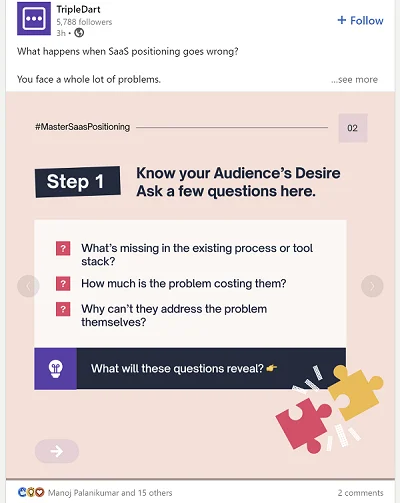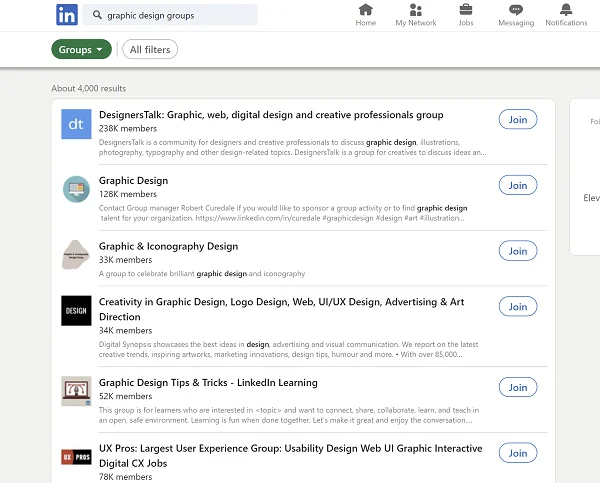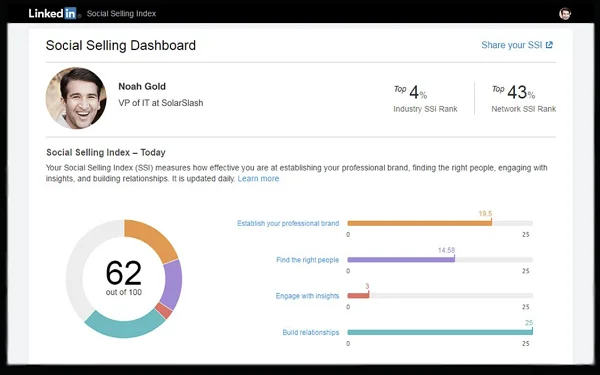With nearly 60% of the world’s population actively using social media, the idea of utilizing social media for improving sales is more important than ever. That’s what social selling is all about.
It is the process of researching, connecting, and engaging with prospects and customers on selected social media networks to naturally and non-intrusively sell your products/services.
Used typically in the context of B2B sales, social selling essentially means capitalizing on social media platforms like LinkedIn and Twitter to create credible, organic connections with prospects and customers. Because while cold calls and emails certainly aren’t dead, today, establishing an authoritative presence on business-relevant social media platforms is key to sales success.
In this quick and actionable guide, let’s look at some ways and best practices to leverage social selling to improve your overall B2B sales performance, starting with why.
Why your business should have a social selling strategy
As a lead generation strategy, social selling has a lot going for it. Here are a few of the many reasons why your sales team should dedicate a good deal of time and effort to social selling.
1. The numbers back it up
Several studies and reports have proven the effectiveness of social selling:
- 61% of organizations invested in social selling report revenue growth.
- Sales teams that use social selling close 40-50% more new deals than those that don’t.
- According to LinkedIn, 78% of businesses that use social selling outperform those that don’t.
- One in three B2B salespeople says social selling has increased the number of leads they work with.
- Prospects exposed to business messages on LinkedIn are 6x more likely to convert.
Clearly, when done right, social selling works.
2. It builds trust and long-term relationships
Unlike traditional hard closing tactics, social selling adopts a more nurturing approach. It goes beyond seeking quick wins or relying on a single solution. To achieve success in social selling, salespeople need to invest time and effort in actively engaging with their target buyers, fostering meaningful connections, and establishing credibility.
It’s a process that requires patience, consistency, and a genuine commitment to building relationships that lead to long-term success. By adopting this approach, sales professionals can create a solid foundation for trust and rapport, paving the way for fruitful sales conversations and increased opportunities for conversions.
3. It betters your understanding of your customers
By combining social listening and fostering meaningful conversations with customers, your sales team can gain valuable insights into the motivations of prospects. Social selling goes beyond sales — it serves as a powerful market research technique. Each social interaction, even if it doesn’t result in a sale, presents an opportunity to collect valuable information about customer preferences and interests.
Armed with this knowledge, you can shape future marketing campaigns, innovate new product designs, and enhance product messaging to align with customer needs. The symbiotic relationship between social selling and market research empowers your brand to make data-driven decisions, cultivate stronger customer relationships, and stay ahead of the competition.
4 Tips to drive sales through social media
So far, we’ve established that social selling works. The question is, how do you make it work for your business? Here are four core social selling tips to drive sales through social media.
1. Creating compelling content for social selling
For every facet of your sales workflow, personalized content — in the form of quick tips, experience-backed advice, infographics, carousels, polls, and short videos — is the fuel that drives things forward. Platforms like LinkedIn and Twitter are ideal to position your brand as a trusted industry expert by sharing valuable insights and educational content. Below is a good example of an educational carousel post.

Think of every post as a two-way communication channel — respond to comments, questions, and inquiries promptly. Foster conversations and engage with people to build meaningful relationships and establish trust. You can (and should) also share content (that aligns with your brand) created by others to showcase your commitment to providing value.
When planning your social content calendar, ensure that each piece aligns with your sales objectives in terms of having clear and compelling CTAs (such as visiting your website, downloading a lead magnet, or signing up for a free trial).
2. Engage in niche-relevant groups
No matter how much you optimize your profile or how consistently you post great LinkedIn content, turning that visibility into sales ultimately lies in networking with the right people.
Consider becoming part of relevant LinkedIn groups that align with your industry or target audience. For example, if you’re selling graphic design software, search and join groups that are dedicated to graphic designers.

By joining niche groups, you’ll gain access to a community of like-minded professionals who are more likely to engage with and show interest in your brand. This provides an invaluable opportunity to forge meaningful connections and expand your network within your desired market.
When participating in group discussions, seize the opportunity to contribute with valuable insights. However, avoid using groups solely as a platform to promote your products or services.
Unwanted sales-oriented comments will only frustrate group members, much like an unsolicited cold call or email. Instead, aim to advance the conversation in a meaningful manner or simply observe and learn from others’ perspectives. By engaging authentically, you can establish credibility and build relationships within the community. Remember, genuine interaction is key to making a positive impact in group discussions.
Embracing LinkedIn groups can significantly enhance your chances of connecting with individuals who hold genuine potential for driving sales and furthering your brand’s reach.
3. Share customer success stories
A crucial part of social selling is posting social proof — customer testimonials, reviews and ratings, case studies, etc.
When you highlight the positive experiences of satisfied customers and the results your brand helped them achieve, it builds trust among potential buyers. These success stories serve as real-life testimonials that demonstrate the value and effectiveness of your product or service.
By showcasing how customers have achieved their goals or solved their problems with the help of your solution, you create a relatable and aspirational narrative that resonates with your followers who may be on the fence about trying your product. Prospective customers can see themselves in the shoes of these successful customers and envision how they could achieve the same success.
Not to mention customer success stories encourage sharing because when customers see their stories being shared, they become brand advocates, helping spread the word about your business and its offerings to their own networks. This amplifies your reach and visibility, ultimately driving more leads and conversions.
4. Invest in the right tools
For B2B social selling, platforms like LinkedIn and Twitter have their own built-in tools. LinkedIn Sales Navigator, for instance, is LinkedIn’s toolkit to help sales reps target the right customers and personalize their outreach. It offers a Social Selling Index (SSI) dashboard that shows you how effective you are at establishing your brand, finding the right prospects, and building professional relationships.

Here are a few handpicked third-party tools that will help you sell better through social:
- Oktopost: Oktopost.com is a social media management platform designed specifically for B2B marketers. It offers a comprehensive set of features and tools to help businesses effectively manage their social media presence, engage with their target audience, and measure the impact of their social media activities.
- Seismic: Seismic.com is a social selling platform that makes it easy to activate sellers on social channels and builds trust and relationships at scale. The tool enables customer engagement through a continuously updated library of credible, high-quality, third-party content for sales and marketing professionals. It uses AI to curate relevant content for each individual seller and allows them to share, measure, and connect their efforts to revenue generation.
- Vidyard: Vidyard.com lets you easily create and share personalized videos throughout your entire sales cycle. It offers a range of distribution and sharing options, allowing businesses to publish videos on various platforms, embed them on websites, and share them on social media. The platform integrates with popular marketing automation and CRM systems, enabling seamless integration of video into existing sales workflows.
Wrapping up
In today’s digital age, social media has revolutionized the way companies connect with their customers. Beyond its role as a platform for engagement and brand awareness, social media has emerged as a powerful tool for driving sales. The convergence of social media and sales — i.e. social selling — has opened up new avenues for businesses like yours to reach and influence their target audience.
With billions of active users across various social media platforms, your brand can tap into this vast pool of existing and potential customers and engage them in a more personalized and meaningful way. All in all, effective social selling via the above-discussed tactics allows your sales team to leverage the power of social media to build relationships, establish trust, and ultimately drive more sales.





